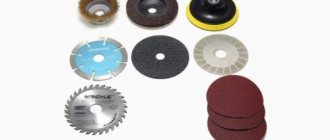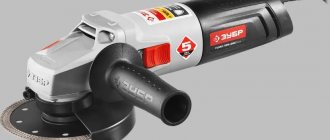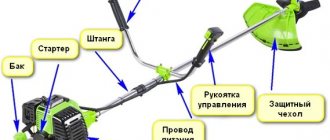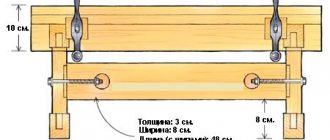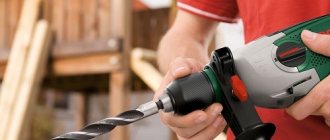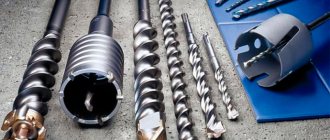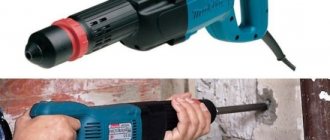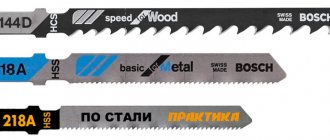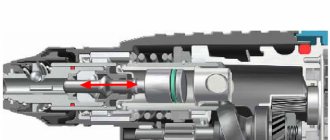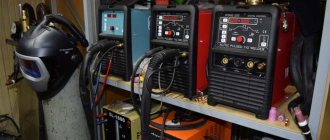Weeding potatoes with a trimmer - devices and their features
Modern gardeners are well aware that household trimmers can be used not only for mowing the grass on the site, but also for weeding overgrown potato bushes.
Weeding with a walk-behind mower saves a lot of time and effort. At the same time, the result will please even the most experienced cultivators. To cultivate the area and remove green manure and weeds, it is best to use a brush cutter in which the power unit is installed in its upper part - this will allow you to cut not only dry, but also wet grass. Weeding potatoes with a trimmer between rows is most often done using a mowing head filled with cord of the appropriate diameter. At the same time, many experienced gardeners claim that wild vegetation, previously mowed with a fishing line with a factory round section, grows back much more slowly than grass that was mowed with a cord with a star-shaped section.
In some cases, a 3-bladed knife is used to cut weeds. It can be metal or plastic. Steel cutting knives can only be installed on brush cutters with straight shafts. If the tool shaft is curved at its lower end, then a plastic cutting attachment must be installed on such a trimmer. The most common problem with metal and plastic knives is the risk of using them. The fact is that if the nozzle comes into contact with a stone or other solid foreign object, the trimmer will tilt back or to the side. As a result, there will be a danger of damaging the grown potato bushes.
Weeding with a trimmer with a cultivator attachment
Some manufacturers produce special attachments in the form of rotary cutters. They can be installed on a brush cutter after first removing its gearbox and the cutting parts of gas-powered tools. The cutters themselves are distinguished by their special shape, made in the form of disks with pre-curved 4 or more blades. They are installed on one axis - this simplifies the operation of the nozzle on the site.
The number of standard cutters and the size of the attachment itself largely depend on the power of the power unit of the brush cutter. Using an overly bulky rototiller can cause the motor to overheat. If you install a very light attachment on the trimmer, its rotation speed will be too high. As a result, some of the weeds will remain untouched. To avoid problems when choosing rototillers, their manufacturers indicate which trimmers they are suitable for.
Chinese soil rotators are very popular among gardeners. They are inexpensive and quite light. However, they often jam within 15–20 minutes after the first installation. To prevent this, experts advise lubricating the moving mechanisms of the cutter with high-quality silicone grease.
How to weed potatoes with a walk-behind mower?
Weeding a garden with a trimmer must be done in compliance with certain rules.
These include:
- Before you start weeding with a trimmer, you need to take care of your personal safety. The operator must wear safety glasses, gloves and a respirator;
- You need to weed the beds when the weed height is low. The procedure using a lawn mower takes less effort and time, so it can be performed once every 1–2 weeks. As soon as the potato tops close in rows, periodic weeding can be stopped;
- It is best to work with a trimmer on the site in the morning. It should be sunny outside - then the mowed grass will quickly wither and turn into mulch;
- During operation, cutters should not be lowered into the soil to a depth of more than 1.5 cm. In this case, the operator will be able to quickly break the hard top crust, as a result of which the soil is crushed and evenly saturated with nitrogen and oxygen. This accelerates the growth of bushes and increases their productivity. In addition, deepening the cutters too much will increase the load on the engine and accelerate its wear;
- If a trimmer with a low power motor is used to weed potatoes, then it needs to be given time to cool down every 10 minutes of operation.
Weeding potatoes with a trimmer: features of the selection of attachments and current rules
Modern tools for garden care are popular not only as devices for performing their direct tasks. Creative owners were able to unlock the maximum potential of the developments and turn seemingly highly specialized units into something universal and multifunctional. A striking example of this is the trimmer (motor mower), which is actively used for weeding potatoes. Moreover, it is preferable to use an electrical device, because the upper location of the engine allows the operator to perform tasks without exerting much physical effort.
What attachments are installed for weeding potatoes with a trimmer?
For row spacing, a trimmer head with fishing line is often used. Experts say that if you use a line with a round section, the weeds will grow back much more slowly. Some owners of brush cutters use a three-blade blade for the above task. Moreover, the metal blade is mounted only on units with a straight rod, because nozzles made of the appropriate material are suitable for plastic ones. The main problem with tools of this kind is vulnerability, because if the unit encounters stones during operation, negative consequences are possible.
At specialized retail outlets you can purchase attachments with durable cutters for weeding your garden with a trimmer.
They are distinguished by the presence of 4 cutters, made in the form of small disks with curved blades. Other models are also possible, which are selected according to the characteristics of the brush cutter engine.
The fact is that if you install a nozzle that is too large, the motor will overheat. All features relating to additional equipment are described in the operating instructions, so you need to take the time to familiarize yourself with the information.
Important point: if the device has a power of less than 2.5 liters. pp., then using a cultivator purchased separately is dangerous for the unit. Oddly enough, in this case it is not recommended to create nozzles yourself, because it is very difficult to guess the dimensional features.
It is not advisable to use a trimmer to weed potatoes on heavy soil. Before you begin processing, you should carefully wipe all elements with a special silicone lubricant so that the mower does not stop working after 20 minutes of operation.
Pros and cons of the method
Weeding a garden with a trimmer, and especially the area where potatoes grow, has its own characteristics and specifics.
First of all, you need to pay attention to the fact that you need to choose the right tool for the job. It is preferable to choose powerful four-stroke engines as a working engine.
Such brush cutters have lower gas consumption and greater productivity compared to two-stroke ones. For two-stroke engines, the recommendations boil down to choosing a higher engine power; the more powerful the engine, the more efficient the work.
Weeding potatoes, unlike making hay or mowing the lawn, is a more labor-intensive process, so you need to be prepared for the fact that after work not only your back, but also your arms and legs will hurt. The fact is that during work you will have to keep the nozzle suspended, preventing the lugs from completely burying themselves in the ground. In addition, you will have to move the unit along the surface from right to left, which also requires significant effort.
But from an economic point of view, such potato weeding will be much more effective than manual weeding - in a season, using a cultivator, you can cultivate a much larger area than with your hands. In this case, repeated processing will be required after a longer period of time.
Alas, there is also a minus. This is a lot of gas mileage. In normal mode, gasoline consumption is usually 0.44-0.92 liters of combustible mixture per 1 hour of operation of the unit, depending on the design and type of engine. With the device installed, this figure increases by approximately 35-40%. So you have to choose either saving time and quality of work or saving money.
Cultivator attachment in action
Weeding with a walk-behind mower: getting to know the basic rules
- Before you begin processing, you should wear a protective respirator and goggles, since the cutters rotate extremely quickly, raising a cloud of small particles and dust;
- Weeding should be done at a time when the weeds are small. Experts recommend carrying out this procedure once every 2 weeks;
- To clean the land, you need to choose a warm, clear day so that the torn vegetation can immediately dry and turn into organic fertilizer;
- Under no circumstances should cutters be immersed to a depth of more than 0.5–1.5 cm. By adhering to this rule, a person will be able to break up the dried crust and supply the soil with the necessary portion of oxygen and nutrients;
- When using a low-power unit, it is advisable to periodically give it a rest to avoid damage due to motor overheating;
- After the end of the season, the nozzle must be treated with a disinfectant to get rid of possible pathogens.
If you do not forget about these points, then weeding will proceed quickly, efficiently and without problems. You need to hold the device as usual and make sure not to touch the tubers and tops.
Features of operation
Taking into account the capabilities of the trimmer and the attachment itself, work with the attachment is carried out before the period when the weeds have not yet grown and become stronger. Thus, the user’s work will be more efficient, because it is easier to cut short grass than to deal with coarse and thick stems. Timely loosening of the soil using a cultivator attachment will contribute to the accelerated growth and strengthening of planted crops and, as a result, high yields.
It is important to securely attach the attachment itself to the gasoline trimmer. It is important to take into account the fact that not every gardener can work with a brush cutter with a cultivator attachment, the reason for which is the weight of the scythe and attachment
If the engine of the unit is not designed for a power of more than 1500 W, this attachment can only be used as a ripper or a light hiller. It is important to understand that the attachment for cultivating soil using a gas mower in no way replaces the unit for weeding, plowing and hilling. This is a mini device for small purposes.
Knives rotating during operation are quite dangerous, and therefore you must work with a gasoline trimmer with extreme caution. Do not attempt to clear weed blades while the device is on. This can only be done when the engine is completely stopped. Do not grab knives with your hands or try to block them. The device must be inspected in a timely manner, eliminating breakdowns and worn parts.
You need to refuel the unit outside
It is important to ensure that there is no oil or fuel leakage. Do not allow the engine to overheat
During operation, the operator must stay away from rotating elements, since the cutters can damage limbs. Before starting work, you need to inspect the area of future processing and rid it of solid objects. For example, it is advisable to get rid of stones that can cause the cutters to stop or even break.
You can learn more about the cultivator attachment for a gasoline trimmer in the video below.
Weeding a vegetable garden with a trimmer - rules of implementation
Weeding with a brush cutter must be done in accordance with a number of important rules. Not only the effectiveness of the procedure being performed, but also the safety of the operator depends on them.
The list of these rules includes:
- Weed removal should be carried out in accordance with safety regulations. Before you begin, you need to put on safety glasses, a respirator, as well as gloves and a suit made of thick fabric. Rubber boots would be a good idea;
- Weeding with a trimmer should be done at a time when the weeds in the area have not yet had time to grow to large sizes. After the initial weeding, all subsequent procedures must be performed at least 2 times a week;
- To remove grass and weeds with a trimmer, you need to choose a warm and sunny day. Under the soaring sun, the grass dries instantly and quickly turns into high-quality organic fertilizer;
- When removing weeds, the cutters should not be immersed more than 1.5 cm into the ground. This depth is sufficient to effectively destroy the hard crust and subsequently supply the soil with useful substances and oxygen;
- When weeding an area with a low-power trimmer, you should take breaks to allow its engine to cool. Otherwise, the risk of serious damage to a household tool increases;
- after harvesting, the attachment used will need to be thoroughly cleaned and treated with a disinfectant - this will prevent the accumulation of pathogenic microbes on the working organs;
- If chips and scratches appear on the nozzle, they need to be painted over to prevent rust from occurring.
Another important point is the storage conditions of the nozzle. Like a utility brush cutter, the weeding device should be stored in a warm, dry room. Otherwise, the metal parts of the nozzle will very quickly become covered with traces of corrosion.
Weeding potatoes with a trimmer in organic farming
While chemists are developing increasingly toxic herbicides, and weeds are successfully adapting to them, supporters of organic farming argue that the soil should be loosened as little as possible, and traditional weeding is generally a useless exercise.
Weeds absorb useful substances that gardeners use to fertilize their beds. If weeded weeds are removed from the site, the soil will lose a certain amount of microelements. And if you cut the weed stems at the root (but only before the seeds form) and leave them to dry in the beds and between the rows, they will act as mulch, attract beneficial worms and insects, and retain moisture. Of course, after some time new shoots will emerge from the roots. But in place of the cut one, only one weed will grow, and if the root is cut during weeding (and it is difficult to completely remove the roots from the ground), then a new plant will sprout from each piece.
Cultivator
Growing potatoes is a labor-intensive process that requires effort and time. Weeding potatoes is one of the important stages of growing. To facilitate the process of removing weeds, use a cultivator. The device can be manual, electric, or equipped with a gasoline engine.
READ MORE: How to make your face look younger: find out 7 useful tips on a small budget
You can also remove parasitic plants from the garden bed manually. This is a real godsend for older gardeners who suffer from arthrosis. For weeding potatoes, you buy the tool in the store or make it yourself. A cultivator removes plants along with their root system.
The technique of use is as follows. The tool is screwed completely into the soil, the entire length of the teeth should go into the ground. Then, in one motion, they lift it up along with the pulled out weed. Most suitable for processing row spacing.
Trimmer attachments for weeding potatoes
To cut weeds and green manure, it is better to use a brush cutter or trimmer with an electric motor located in the upper part: then the device can work in wet grass. Between rows they usually mow with a trimmer head and fishing line (Fig. 1). It has been noticed that weeds mowed with a line with a round cross-section grow more slowly than after cutting with a cord with a star-shaped cross-section.
Sometimes a three-blade knife is used to cut weeds (Fig. 2). But metal knives are only used on trimmers with a straight bar; if it is curved, plastic attachments are used. The problem is that if the knife hits a hard object while moving, the trimmer will jump back or even break. Models with a curved rod are equipped with plastic knives.
Is it worth making a cultivator attachment yourself?
The technology for caring for vegetation will also change: first, use a knife attachment to walk through the beds, cutting off the grass, and only then use a cultivator attachment.
Having decided to make your own cultivator attachment for the trimmer, you should first evaluate the following:
The design of the output section of the boom: if it is a flexible shaft, then you will have to forget about the cultivator: it will not withstand the constantly changing amplitude of torques. The cardan transmission is more functional, and the most successful design is considered to be a multi-slotted rod, and a straight one, not a curved one. Drive power: If it is less than 1000W, the motor will overheat and the cultivation performance will drop sharply. Fuel tank volume: energy consumption will increase significantly, since the cultivator attachment will have to be made from scrap materials. Therefore, the tank must contain at least 1 liter of fuel. Handle design. Ergonomics experts believe that the most comfortable is the T-shaped handle, which provides the most accurate and reliable direction. The J-shaped handle common in some models makes it difficult to hold a gasoline trimmer with a cultivator attachment.
If the existing trimmer meets the listed requirements, and its owner has sufficient experience in performing such work, then it is quite possible to make a disk attachment with your own hands. As for gear-type nozzles, making them yourself is very labor-intensive and will not provide the desired quality.
Weeding potatoes with a brush cutter with a cultivator attachment
Stores sell cultivator attachments for brush cutters with soil cutters (Fig. 3). The cutters look like discs with curved blades mounted on a common axis. As a rule, there are 4 cutters in the nozzle.
The width of the nozzle, diameter and number of cutters directly depend on the power of the trimmer motor. If you use a cultivator that is too large, the engine may overheat. Usually, the instructions for the attachment indicate which trimmers or brushcutter it is intended for. If the power of the brush cutter is less than 2.5 liters. pp., and the cultivator is not included in the kit, then it is dangerous to use an attachment purchased separately: this will significantly reduce the service life of the equipment.
It is not recommended to make the nozzle by hand, since it is difficult to select its width and the diameter of the cutters in such a way that the trimmer motor does not suffer. The same rule applies to cutters as to a mowing knife: a collision with a hard object leads to breakage of the brush cutter. Do not weed potatoes with a walk-behind mower or trimmer on heavy, clay soils.
It happens that the Chinese attachment on a potato trimmer jams after only 10–15 minutes of operation. To prevent an accident, experienced gardeners recommend thoroughly treating all rubbing parts of the cultivator with silicone grease before first use.
Attachments for brush cutters make sure that the trimmer can be a multifunctional unit
The lawn mower has always been an integral tool in lawn care, both for ordinary people and for public utilities. Moreover, you can even use it to make hay for pets, cut grass on farm plots, or use it to weed potatoes.
Thanks to the presence of a wide variety of attachments, the user has the opportunity to reveal the functional potential of the unit and turn it into a “universal soldier” that will save money, effort and time.
Let's get acquainted with the types of attachments for lawn mowers
It should be noted that many specialized stores offer a wide variety of attachments. But they are only suitable for models with a collapsible rod, because to install the add-on, you must remove the main head and place another in its place.
The basic types include:
- Pole saw;
- Lawn edge treatment;
- Cultivator, etc.
You should get to know each of the listed tools a little closer and understand the design features and specifics of the tasks performed.
Pole saw: features
With its help, a person can get rid of twigs and branches that grow at a height of three meters. The object’s design features allow it to perform such operations, because the pole-cutter attachment on a brush cutter consists of a one-and-a-half meter bar, supplemented with a chain or tire.
In most cases, the chain width does not exceed 1-3 mm, and the comfortable weight of 2.5 kg for long-term work allows a person to actively operate the unit and not feel pain in the back or shoulders.
It is worth noting that thanks to the lopper attachment for a lawn mower, you can reach small branches located at a height of up to 4.5 m. The only difference between a lopper and a lopper is that the first option works on the principle of a chainsaw, and the second on the principle of a hacksaw.
As for homemade versions of this device, there is no need to create them, because in stores such attachments are very affordable and almost everyone can afford to buy them.
Lawn Edger
In principle, this device is very similar to the standard brush cutter attachment, but the main difference lies in the more curved rod. With its help, the operator can reach the most remote and hard-to-reach places to cut grass.
In most cases, this tool is equipped with a special line feed system. It is thanks to this system that the width of the cultivated area can be determined as accurately as possible. The weight of this supplement is 2.7 kg.
Cultivator attachments
With the help of the specified attachment for cultivation, a person can easily cultivate small areas of land. Additions of a serrated or drum plan are used for loosening the soil near trees, digging up flower beds and vegetable gardens, hilling potatoes, carrots, etc.
Often objects are equipped with several reliable cutting parts. They use a rod with a diameter of about 25 mm, which contributes to a high level of endurance. The attachments also have an adjustment for the cutting width of the cutters (130-250mm).
Types of cultivator attachments for trimmers
Today there are 2 types of cultivator attachments for lawn mowers on the market:
- Disk. Options are equipped with several discs with fixed knives. Moreover, the ends of these same blades are curved in a certain direction. A special protective flap is installed on top of them, allowing the soil not to fly out during the working process;
- Serrated. This type of trimmer cultivator consists of a straight row of slightly curved, pointed blades that turn the soil upside down and open it up. The object is quite heavy, in some cases its weight can reach 5 kg.
It is worth noting that the cutter attachment on the brush cutter will not allow you to press the blades close to the soil, because the rod has a lot of spring, and excessive pressure can cause the rod to bend and break. Moreover, experts do not recommend using a cultivator for lawn mowers on clay soil, because it will not be able to penetrate deeper and will only scratch the surface.
DIY weeding attachment
It is also very encouraging that in modern conditions it is not so difficult to create a weeding attachment for a lawn mower with your own hands. The main thing is to carefully watch the videos below and follow the advice of people who actually managed to construct a homemade assistant based on an electric or gasoline unit.
Rules for weeding potatoes with a trimmer
- Before starting work, you must put on goggles and a respirator: the cutters rotate very quickly, creating a cloud of dust and small grass clippings;
- Weeding should be done when the weeds are still very small and have not had time to take root properly. Since weeding with a trimmer takes several times less time than manual labor, it is better to process the beds once every 7–14 days. When the tops of the potato bushes close in rows, weeding will no longer be needed;
- It is recommended to choose the morning of a sunny day for weeding. Then the uprooted weeds will wither and turn into mulch during the heat of the day;
- According to the principles of organic farming, the cutters cannot be deepened more than 0.5–1.5 cm. With this method of processing, the dried crust is broken, and the top layer of soil in the beds is saturated with oxygen and nitrogen, which is very useful for the growth of tubers;
- The cutters cannot be deepened also because if you press too hard on the trimmer, the motor will overheat and break;
- When weeding with a trimmer with a low-power engine, it is recommended to take a break every 10–15 minutes to allow the motor to cool;
- At the end of the season, the nozzle is thoroughly wiped with a disinfectant composition (a solution of bleach, potassium permanganate or copper sulfate), since pathogens of potato diseases may remain on it. If there have been cases of disease on the site, then this operation is performed after each use of the cultivator.
DIY equipment for weeding potatoes
Recently, it has been quite difficult to find high-quality factory tools at an inexpensive price, which forces farmers and gardeners to make weeding tools with their own hands. At the same time, the tools are metal, so it will be difficult to make them without the use of a welding machine and welding skills.
READ MORE: The best Mulinex bread machine in 2019-2020 - 9 TOP rating of the best
So, for manual weeding, homemade products like a flat cutter are very popular. The working tool is a sharpened square frame, in front of which a hedgehog-type attachment is attached, which facilitates the movement of the tool during weeding. The finished nozzle is attached to a wooden nozzle. This product is easy to make yourself, using a welding machine, as well as existing metal fragments and factory samples of tools that have become unusable.
To make a device that can simultaneously weed and hill up potatoes, you can take the frame of an old bicycle, leaving one wheel on it. On the other hand, a V-shaped plow attachment should be attached to the base of the frame.
